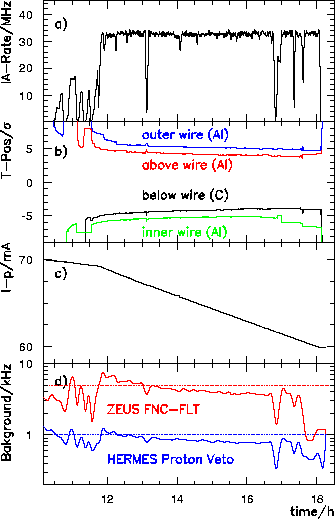
Figure 14: Interaction rate (a), wire position (b), proton current (c) and the two most critical background rates (d) of a typical HERA-B high rate target run.

Figure 14: Interaction rate (a), wire position (b), proton current (c)
and the two most critical background rates (d) of a typical
HERA-B high rate target run.
During the last years the feasibility of long term
high rate target operations was proven.
Fig. 14 shows a typical example with six hours
continuous rates above 30 MHz, produced with four wires from
one target station.
The few large degradations (a) of the rate are triggered by the target
emergency system, which retracts for safety reasons the wires to avoid
huge spikes in the rate.
During the run the targets move steadily closer to the beam (b)
and scrape away
protons from the bunch tails to keep the interaction rate constant.
The wires approach to less than four sigma to the beam core.
The scrapping of the beam leads to a clearly visible reduction of the
proton current and lifetime (c).
In the above example the proton lifetime while high rate is between 45 h
and 50 h. This results in a target efficiency
![]() between 60 and 65 %.
Another important topic is the
background at the other HERA experiments caused by large angle
elastic proton nucleon scattering in the target wires.
In Fig. 14 d) the both most critical background rates
together with the limits for good running conditions are given. The limits
for still acceptable background conditions are a factor of two higher.
In the 1996 run it was proven, that the HERA optics modifications for the HERA-B
experiment together with the extended and adjusted proton collimator system
is very effective for the reduction of target induced background.
between 60 and 65 %.
Another important topic is the
background at the other HERA experiments caused by large angle
elastic proton nucleon scattering in the target wires.
In Fig. 14 d) the both most critical background rates
together with the limits for good running conditions are given. The limits
for still acceptable background conditions are a factor of two higher.
In the 1996 run it was proven, that the HERA optics modifications for the HERA-B
experiment together with the extended and adjusted proton collimator system
is very effective for the reduction of target induced background.